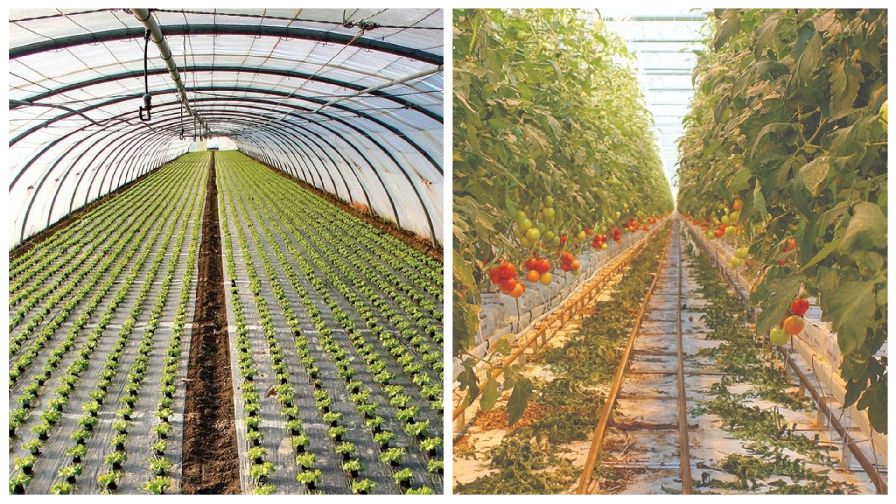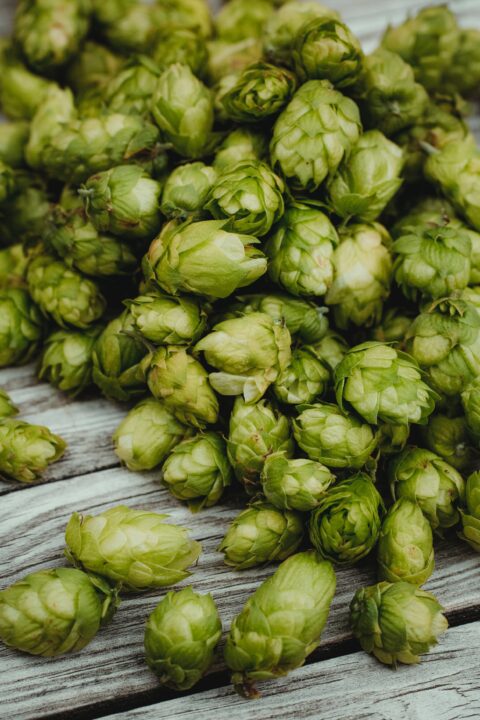Hoop House or Greenhouse — Which One Is for You?
 When you decide to add a protected ag structure to your growing operation, whether it’s for growing your own transplants or to extend your season, you face an inescapable question. Do you go with controlled environment greenhouse or a more passive system like hoop houses?
When you decide to add a protected ag structure to your growing operation, whether it’s for growing your own transplants or to extend your season, you face an inescapable question. Do you go with controlled environment greenhouse or a more passive system like hoop houses?

How They Are Alike
Both are used to modify the environment to assist in growing crops when the weather outside is not quite suitable. Both also have an irrigation system installed to take the place of water from rainfall.
Plastic mulch is another much simpler and cheaper option to help adjust the soil temperature for growing vegetables in early spring.
They both extend the spring and fall season, which offers growers a strategic advantage. Harvest can begin earlier in the spring than from field propagation, so there is a premium price the grower can obtain. Same with the fall, when harvesting can continue after field vegetables have bit the dust with frosts and a hard freeze.
Quality and yield of produce are also higher from a hoop house and greenhouse than from the field, leading to higher profits. The cover also keeps rain from wetting the leaves so can reduce disease pathogens from spreading. Weeds are also reduced by keeping rain from watering row middles.
How They Differ
From a distance, hoop houses and greenhouses may look the same. But as you approach, it becomes apparent that greenhouses have exhaust fans on one end, heaters, and motorized vents installed, and probably lights. So they are heated and cooled actively with electricity and carbon-based energy.
On the other hand, hoop houses, which some call high tunnels, are passively cooled by rolling up the end walls and side walls to allow heat to escape and cooler breezes to wash out the warm air as needed. The vents are opened in the morning, when outside temperature starts to heat up, and closed late in the day if night temperature is predicted to drop below a safe set point. Hoop houses generally do not have electricity.
One way to think of it is that hoop houses are a hybrid between open field production and greenhouse production.
Of course, there are variations. Some hoop houses ave temporary heating for those really cold nights. Some have vents. But if too much is added to it, it morphs into a greenhouse.
Do You Plant to Grow in Winter?
Because of these main structural differences, hoop houses are much cheaper than greenhouses. They are used for extending the season earlier in the spring, later into the fall, or both. They are not as useful during the winter months in Northern states since there is no heating source other than closing them up and trapping the energy of sun inside where it turns to heat.
On the other hand, greenhouses, with their electricity, heaters, fans, and vents, are designed for year–round production of vegetable, flowers, or other crops. Consequently, they are more expensive to buy and operate.
How Much Growing Space Do You Need?
Greenhouse structures allow you to add as many bays as you need. There’s really no size limit. In fact, some overseas greenhouse operations are the size of cities.
In contrast, most hoop houses are single, free standing, Quonset-style structures. If more than one is desired, they can be gutter connected so that the side wall between the two (or more) can be eliminated.
You Can Get Grants for Hoop Houses
The Natural Resources Conservation Service (NRCS) has grants to help with hoop house or high tunnel costs through the Environmental Quality Incentives Program, which will cover most of the cost. Contact your local NRCS office for information and take advantage of these funds while they are still available. They won’t last forever.
More Resources
A few good sources of information are:
- HighTunnels.org
- Mississippi State University Extension (for both Greenhouse tomatoes and hoop houses suppliers)










